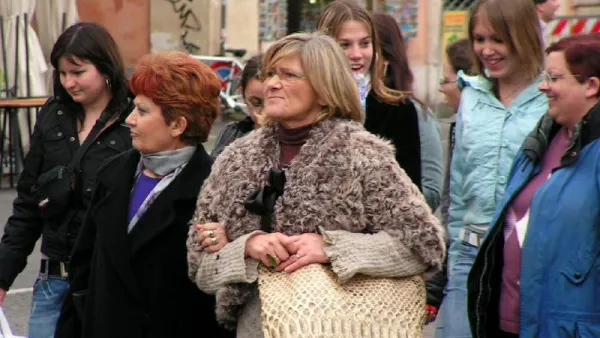Barcelona is planning to expand on its initial superblock experiment in an attempt to ease the stranglehold of car congestion and air pollution gripping the dense city.
"Barcelona's urban plan is the most ambitious thing going," according to this article by David Roberts. Those ambitions are defined on a global scale, and they center around a widespread expansion of the superblock concept that the country has been testing since 2016.
With this article, Roberts is launching a five-part series on the Urban Mobility Plan of Barcelona. Here's how Roberts describes the significance of the plan in the first article from the series:
The plan, which contains not only superblocks but comprehensive programs for green space, bicycle and bus networks, and much more, will not eliminate cars in the city, or deny one to anyone who needs one. But it will radically reduce their prevalence, the amount of space they occupy, and demand for their services. If it is fully implemented (a task that could take multiple administrations, even multiple generations), it could make Barcelona the first plausibly “post-car” major city in the world — a place where most streets are not for cars and most people don’t have one.
According to Roberts, Barcelona's new urban plan is a result of advocacy work and research by Salvador Rueda, founder of the Urban Ecology Agency of Barcelona, and planner working in Barcelona in some capacity for 40 years. "Now his vision for the city has found its way into an urban plan that has the backing of the current municipal administration. It is currently being implemented, with the audacious goal of replicating Barcelona’s five existing superblocks, ahem, 495 more times," according to Roberts.
The article frames Barcelona's plan to expand its superblocks as a process of reclaiming the city from cars—a task that will challenge and likely revise the plan's ambitions on the way to completion. Similar significance has been discussed as a response to the idea of implementing forms of congestion pricing in Manhattan and other cities around the country. Still, this is a local story, and Barcelona unique situation could enable it to become the first post-car city, according to Roberts.
FULL STORY: Cars dominate cities today. Barcelona has set out to change that.

National Parks Layoffs Will Cause Communities to Lose Billions
Thousands of essential park workers were laid off this week, just before the busy spring break season.

Retro-silient?: America’s First “Eco-burb,” The Woodlands Turns 50
A master-planned community north of Houston offers lessons on green infrastructure and resilient design, but falls short of its founder’s lofty affordability and walkability goals.

Delivering for America Plan Will Downgrade Mail Service in at Least 49.5 Percent of Zip Codes
Republican and Democrat lawmakers criticize the plan for its disproportionate negative impact on rural communities.

Test News Post 1
This is a summary

Test News Headline 46
Test for the image on the front page.

Balancing Bombs and Butterflies: How the National Guard Protects a Rare Species
The National Guard at Fort Indiantown Gap uses GIS technology and land management strategies to balance military training with conservation efforts, ensuring the survival of the rare eastern regal fritillary butterfly.
Urban Design for Planners 1: Software Tools
This six-course series explores essential urban design concepts using open source software and equips planners with the tools they need to participate fully in the urban design process.
Planning for Universal Design
Learn the tools for implementing Universal Design in planning regulations.
EMC Planning Group, Inc.
Planetizen
Planetizen
Mpact (formerly Rail~Volution)
Great Falls Development Authority, Inc.
HUDs Office of Policy Development and Research
NYU Wagner Graduate School of Public Service




























